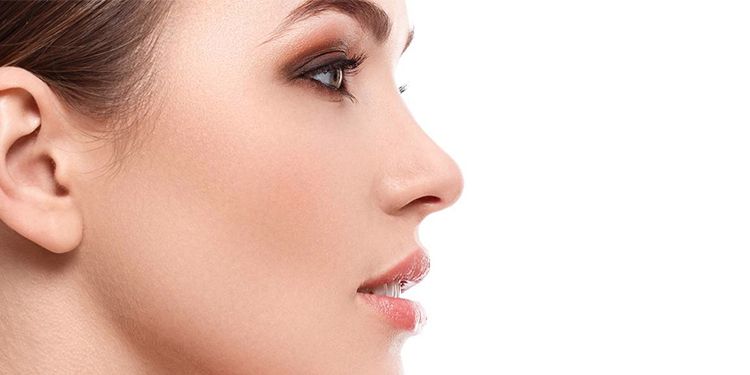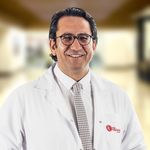
























What is Rhinoplasty?
Rhinoplasty is one of the most preferred aesthetic operations in our country. In order to have a better appearance, people from many countries of the world visit our country for rhinoplasty. Apart from aesthetic concerns, rhinoplasty, which is also applied for health problems, is one of the aesthetic operations that require the most attention. Since the face is the most prominent organ, changes in the shape of the nose greatly change the face and expression.
Rhinoplasty is surgical operations performed to eliminate the deformities of the nose and to eliminate existing health problems. Health problems such as bone curvatures, deformities, and nasal concha in the nose can cause many problems such as breathing difficulties, sleep apnea, bad breath. The size of the nose and nostrils rhinoplasty surgery, and shape can be changed can be corrected with the angle between the lips and the nose angle between the forehead and nose root.
Who Can Have Nose Aesthetics?
Rhinoplasty, not satisfied with the shape of the nose is a process that can be applied to everyone conducive to the overall health of the operation. In order for this operation to take place, bone development must be completed. Therefore, men under the age of 18 and women under the age of 16 are not considered suitable for the operation.
Rhinoplasty operation cannot be performed during pregnancy. For the operation, at least 6 months must have passed after birth. The main reason for this is to prevent the transfer of drugs used during and after the operation to the baby through breast milk and breastfeeding. Another reason is the necessity of performing the operation after the disappearance of swelling and edema on the face after pregnancy.
In Which Situations are Rhinoplasty Preferred?
Most of the men and women who apply for rhinoplasty want this operation to have a better appearance. The deformities present in the nose change the entire facial expression and this can lead to self-confidence problems. Studies have shown that people are more active and successful in their social and business lives after rhinoplasty operations.
Common nasal deformities:
Loss or deformities in the nasal tissue as a result of injuries due to trauma and accidents are eliminated as much as possible with rhinoplasty and the nose can be brought to its proper form.
Rhinoplasty surgeries are not only preferred for a better appearance. There is excessive curvature in the nose, nasal flesh, and cartilage failure in cases where the presence of narrowing of the nasal cavity reasons such as difficulty breathing rhinoplasty for patients who are recommended. Septoplasty, valve repair, turbinate treatments, etc. Nasal deformities that cause breathing difficulties can be eliminated by using techniques.
How Should the Doctor Selection for Rhinoplasty?
Rhinoplasty is one of the most sensitive and experience-requiring aesthetic operations. In order to obtain a result that looks natural, is compatible with your face, and will not cause any health problems, you must choose a knowledgeable, experienced, and specialist doctor.
The way to find out how knowledgeable your doctor is is to check his or her background. His academic career, scientific publications, congresses he attended and gave speeches will allow you to have an idea about your doctor's knowledge and experience. The way to understand how meticulously your doctor works in choosing a doctor is to contact his previous patients. You can decide whether you have made the right choice by having information about the results and treatment process of the aesthetic operations performed by the same doctor before. A good plastic surgeon should not make the same noses all the time, because every face shape is different, the appropriate and natural-looking nose is different for every face.
When choosing a doctor for rhinoplasty, patients can also have an idea according to the pricing offered by the surgeon. However, the techniques used by doctors who charge too low are also more likely to fail. It should be known that correcting an unsuccessful rhinoplasty is much more expensive and requires advanced techniques.
What are the Types of Rhinoplasty?
Types of rhinoplasty; We can say that there are 3 types as nose augmentation operations, noise reduction operations, and operations where both techniques are applied together. In nose augmentation operations, rib cartilages, ear cartilages, the membrane is taken from the scalp, and abdominal muscle membrane can be used. These operations are mostly preferred for patients who have previously had rhinoplasty in another clinic and have failed. In nose reduction operations, the removed tissue pieces are used to reshape the nose.
What are the Techniques Used in Rhinoplasty?
There are many techniques used for rhinoplasty. A good plastic surgeon should be able to apply the technique with expertise, which should be used according to the patient's complaint and the intended result, instead of applying the same techniques to all patients. Depending on the deformity of the nose and the skin structure, the rhinoplasty technique used also varies.
Open Nose Aesthetics
It is the most commonly used rhinoplasty technique today. In this technique, a small incision is made in the column between the two nostrils and the nasal bones and cartilages are shaped. With this advantageous technique, it is ensured that the nose easily takes the desired form and the tip of the nose remains more robust thanks to the stitches.
This technique can be preferred for all deformities in the nose and it is possible to plan the shape to be given to the nose in 3D before the operation. High-tech ultrasonic bone shaping devices can be used in the operation. After the operation, an inconspicuous scar may form in the area where the incision was made, but this scar is erased in a period of 1 year.
Closed Nose Aesthetics
One of the first techniques used for the aesthetics of the nose closed rhinoplasty is. Although this technique is preferred in patients who do not need nasal tip shaping, it is rarely used today.
In the closed rhinoplasty technique, the incisions are made through the nostrils and no dominance is achieved over the tip of the nose. It is mostly preferred for minor revisions and deformities on the back of the nose. However, opening the incisions through the nostrils also eliminates the risk of any scar formation.
Rhinoplasty with Delivery Technique
In the delivery technique, which is one of the advantageous techniques, two parallel incisions are made through the nose and the nasal cartilages are shaped. With this technique, as in open rhinoplasty, the nose tip is dominated, while the risk of scar formation is eliminated by not making an incision in the column between the two nostrils.
It is a very sensitive and expert operation, as the mechanisms that create support for the nose are intervened. This technique is preferred in cases where the nostrils are not narrow, there is no severe nasal curvature and the tissues on both sides of the nose are not asymmetrical.
Nose Aesthetics with Modified Delivery Technique
While this technique allows dominance of the tip of the nose, just like in the delivery technique, it does not pose a risk of scarring, since no incision is made in the column between the two nostrils. The most obvious difference from the delivery technique is that there is no possibility of damage to the nasal support mechanisms, since there is no need for a second incision in the nose.
This method, which is preferred in patients who have not undergone rhinoplasty before, is not preferred in patients with curved and flat noses and in cases where the tissues on both sides of the nose are asymmetrical.
How is the Examination Performed for Nose Aesthetics?
In the examination for rhinoplasty, interviews are conducted about the reason for the patients' request for the operation, their expectations and their health status. The questions asked by the patient are answered and ideas are shared about the realization of their expectations.
Many patients do research before coming to the examination and show the photos of the noses they want. However, the shape and structure of the nose of the patients may not always be suitable for achieving the desired result. In this direction, I recommend patients to present photographs of the noses they want, as well as photographs that reflect the nose shapes they do not want. This allows the pleasure of the patient to be understood and ensures that the result is closest to the patient's expectations.
Is Nose Aesthetic Surgery Possible with Local Anesthesia?
It is not possible to perform rhinoplasty with local anesthesia. The main reason for this is that local anesthesia is not sufficient to keep the blood pressure constant during the operation. This may lead to more bleeding than normal during the operation.
Apart from this, performing the operation under general anesthesia is more comfortable for the surgeon and the patient. Since rhinoplasty is a very sensitive and careful operation, it is performed under general anesthesia in order to prevent possible bleeding and problems.
Is Non-Surgical Rhinoplasty Possible?
Surgery is not always the only way for rhinoplasty. There are many techniques used for non-surgical rhinoplasty, but these techniques do not provide long-term permanence and need to be repeated.
In order to eliminate the deformities of the nose, the most frequently preferred non-surgical rhinoplasty method for patients who are afraid of surgery is filling applications. Various filling materials containing Hyaluronic Acid are used for this technique. With this technique, which is performed with local anesthesia, mild deformities in the nose can be removed painlessly and within minutes. Filling applications with the permanence of 1 year are not recommended for patients who want to have rhinoplasty in the future. The main reason for this is that it causes the nose to undergo a procedure, albeit mildly.
Another technique used in non-surgical rhinoplasty is nasal botox applications. With this method, which is carried out using botulinum toxin, the nose falling down is alleviated, but shape change cannot be made.
The rope suspension method is also one of the preferred methods in non-surgical rhinoplasty. However, this method is also not permanent, and in the long run, the nose may fall out with the loosening of the thread, or it may result in results such as cutting the tissue. The most healthy and permanent method to eliminate the deformities of the nose and achieve the dreamed nose shape is rhinoplasty.
Healing Process After Nose Aesthetic Surgery
After the rhinoplasty operation, the nose is supported with a special plastic material in order to preserve the new shape of your nose. This material remains in your nose for 7-10 days after the operation. In this process, ice compresses are recommended to the patient in order to prevent swelling and pain.
After the removal of the plastic material, the coarse swellings in the nose heal, and the slight swellings that cannot be noticed by people who do not know you remain for a while. Thanks to the advanced technology devices used in this operation, bruising does not occur in most patients, and in cases where it occurs very little, it heals within a few days.
It takes about 1 year for the nose to fully heal and settle after rhinoplasty. At the end of this period, patients have the nose they dream of for life and do not experience any negativity. During the recovery period, patients are called for regular check-ups in the first week, the first month, 3rd month, 6th month, 1st year, and once a year. Patients can return to social life on the 3rd day after the operation.
Things to Consider Before Nose Aesthetic Surgery
Things to Consider After Nose Aesthetic Surgery
What procedures are available at Group Florence Nightingale Hospitals?
How many medical staff are there at Group Florence Nightingale Hospitals and what accreditations do they have?
Rhinoplasty, commonly known as the “nose job,” is plastic surgery to change the shape of the nose and to improve its function. This procedure can be performed for medical and cosmetic reasons. Those with breathing problems caused by a birth defect, deviated septum, sinusitis, or an injury to the nose, as well as those who are not happy with the appearance of their nose, can undergo rhinoplasty.
Rhinoplasty has a number of benefits. However, the most compelling reason for patients to have this surgery is to improve the appearance of their noses, which can boost their self-esteem significantly. Besides altering the form and size of your nose, the procedure can also strengthen the bridge, narrow the nostrils, and reshape the tip.
While anyone can undergo rhinoplasty, teenagers are advised to wait until their nose has reached its adult size.
You generally need to wait at least 2 to 3 weeks until you can resume most of your normal activities. However, you should not perform any strenuous activities, such as intense exercise, for about 3 to 6 weeks. During the first few days after the surgery, you will experience some swelling around your eyes, but these will subside within 3 to 14 days. You will also have to wear a nasal splint for about a week following the surgery.
Rhinoplasty is considered one of the most complicated facial cosmetic surgeries. However, thanks to the advances in technology and surgeons’ extensive experience, the procedure has a very high success rate of between 85% and 90%.
Although rhinoplasty is generally safe, it does carry some potential risks of complications and side effects, including bleeding, infection, allergic reaction to the anesthesia, permanent numbness in your nose, difficulty breathing through the nose, an uneven-looking nose, discoloration, persisting pain, scarring, septal perforation, and a need for additional surgery.













































What is Rhinoplasty?
Rhinoplasty is one of the most preferred aesthetic operations in our country. In order to have a better appearance, people from many countries of the world visit our country for rhinoplasty. Apart from aesthetic concerns, rhinoplasty, which is also applied for health problems, is one of the aesthetic operations that require the most attention. Since the face is the most prominent organ, changes in the shape of the nose greatly change the face and expression.
Rhinoplasty is surgical operations performed to eliminate the deformities of the nose and to eliminate existing health problems. Health problems such as bone curvatures, deformities, and nasal concha in the nose can cause many problems such as breathing difficulties, sleep apnea, bad breath. The size of the nose and nostrils rhinoplasty surgery, and shape can be changed can be corrected with the angle between the lips and the nose angle between the forehead and nose root.
Who Can Have Nose Aesthetics?
Rhinoplasty, not satisfied with the shape of the nose is a process that can be applied to everyone conducive to the overall health of the operation. In order for this operation to take place, bone development must be completed. Therefore, men under the age of 18 and women under the age of 16 are not considered suitable for the operation.
Rhinoplasty operation cannot be performed during pregnancy. For the operation, at least 6 months must have passed after birth. The main reason for this is to prevent the transfer of drugs used during and after the operation to the baby through breast milk and breastfeeding. Another reason is the necessity of performing the operation after the disappearance of swelling and edema on the face after pregnancy.
In Which Situations are Rhinoplasty Preferred?
Most of the men and women who apply for rhinoplasty want this operation to have a better appearance. The deformities present in the nose change the entire facial expression and this can lead to self-confidence problems. Studies have shown that people are more active and successful in their social and business lives after rhinoplasty operations.
Common nasal deformities:
Loss or deformities in the nasal tissue as a result of injuries due to trauma and accidents are eliminated as much as possible with rhinoplasty and the nose can be brought to its proper form.
Rhinoplasty surgeries are not only preferred for a better appearance. There is excessive curvature in the nose, nasal flesh, and cartilage failure in cases where the presence of narrowing of the nasal cavity reasons such as difficulty breathing rhinoplasty for patients who are recommended. Septoplasty, valve repair, turbinate treatments, etc. Nasal deformities that cause breathing difficulties can be eliminated by using techniques.
How Should the Doctor Selection for Rhinoplasty?
Rhinoplasty is one of the most sensitive and experience-requiring aesthetic operations. In order to obtain a result that looks natural, is compatible with your face, and will not cause any health problems, you must choose a knowledgeable, experienced, and specialist doctor.
The way to find out how knowledgeable your doctor is is to check his or her background. His academic career, scientific publications, congresses he attended and gave speeches will allow you to have an idea about your doctor's knowledge and experience. The way to understand how meticulously your doctor works in choosing a doctor is to contact his previous patients. You can decide whether you have made the right choice by having information about the results and treatment process of the aesthetic operations performed by the same doctor before. A good plastic surgeon should not make the same noses all the time, because every face shape is different, the appropriate and natural-looking nose is different for every face.
When choosing a doctor for rhinoplasty, patients can also have an idea according to the pricing offered by the surgeon. However, the techniques used by doctors who charge too low are also more likely to fail. It should be known that correcting an unsuccessful rhinoplasty is much more expensive and requires advanced techniques.
What are the Types of Rhinoplasty?
Types of rhinoplasty; We can say that there are 3 types as nose augmentation operations, noise reduction operations, and operations where both techniques are applied together. In nose augmentation operations, rib cartilages, ear cartilages, the membrane is taken from the scalp, and abdominal muscle membrane can be used. These operations are mostly preferred for patients who have previously had rhinoplasty in another clinic and have failed. In nose reduction operations, the removed tissue pieces are used to reshape the nose.
What are the Techniques Used in Rhinoplasty?
There are many techniques used for rhinoplasty. A good plastic surgeon should be able to apply the technique with expertise, which should be used according to the patient's complaint and the intended result, instead of applying the same techniques to all patients. Depending on the deformity of the nose and the skin structure, the rhinoplasty technique used also varies.
Open Nose Aesthetics
It is the most commonly used rhinoplasty technique today. In this technique, a small incision is made in the column between the two nostrils and the nasal bones and cartilages are shaped. With this advantageous technique, it is ensured that the nose easily takes the desired form and the tip of the nose remains more robust thanks to the stitches.
This technique can be preferred for all deformities in the nose and it is possible to plan the shape to be given to the nose in 3D before the operation. High-tech ultrasonic bone shaping devices can be used in the operation. After the operation, an inconspicuous scar may form in the area where the incision was made, but this scar is erased in a period of 1 year.
Closed Nose Aesthetics
One of the first techniques used for the aesthetics of the nose closed rhinoplasty is. Although this technique is preferred in patients who do not need nasal tip shaping, it is rarely used today.
In the closed rhinoplasty technique, the incisions are made through the nostrils and no dominance is achieved over the tip of the nose. It is mostly preferred for minor revisions and deformities on the back of the nose. However, opening the incisions through the nostrils also eliminates the risk of any scar formation.
Rhinoplasty with Delivery Technique
In the delivery technique, which is one of the advantageous techniques, two parallel incisions are made through the nose and the nasal cartilages are shaped. With this technique, as in open rhinoplasty, the nose tip is dominated, while the risk of scar formation is eliminated by not making an incision in the column between the two nostrils.
It is a very sensitive and expert operation, as the mechanisms that create support for the nose are intervened. This technique is preferred in cases where the nostrils are not narrow, there is no severe nasal curvature and the tissues on both sides of the nose are not asymmetrical.
Nose Aesthetics with Modified Delivery Technique
While this technique allows dominance of the tip of the nose, just like in the delivery technique, it does not pose a risk of scarring, since no incision is made in the column between the two nostrils. The most obvious difference from the delivery technique is that there is no possibility of damage to the nasal support mechanisms, since there is no need for a second incision in the nose.
This method, which is preferred in patients who have not undergone rhinoplasty before, is not preferred in patients with curved and flat noses and in cases where the tissues on both sides of the nose are asymmetrical.
How is the Examination Performed for Nose Aesthetics?
In the examination for rhinoplasty, interviews are conducted about the reason for the patients' request for the operation, their expectations and their health status. The questions asked by the patient are answered and ideas are shared about the realization of their expectations.
Many patients do research before coming to the examination and show the photos of the noses they want. However, the shape and structure of the nose of the patients may not always be suitable for achieving the desired result. In this direction, I recommend patients to present photographs of the noses they want, as well as photographs that reflect the nose shapes they do not want. This allows the pleasure of the patient to be understood and ensures that the result is closest to the patient's expectations.
Is Nose Aesthetic Surgery Possible with Local Anesthesia?
It is not possible to perform rhinoplasty with local anesthesia. The main reason for this is that local anesthesia is not sufficient to keep the blood pressure constant during the operation. This may lead to more bleeding than normal during the operation.
Apart from this, performing the operation under general anesthesia is more comfortable for the surgeon and the patient. Since rhinoplasty is a very sensitive and careful operation, it is performed under general anesthesia in order to prevent possible bleeding and problems.
Is Non-Surgical Rhinoplasty Possible?
Surgery is not always the only way for rhinoplasty. There are many techniques used for non-surgical rhinoplasty, but these techniques do not provide long-term permanence and need to be repeated.
In order to eliminate the deformities of the nose, the most frequently preferred non-surgical rhinoplasty method for patients who are afraid of surgery is filling applications. Various filling materials containing Hyaluronic Acid are used for this technique. With this technique, which is performed with local anesthesia, mild deformities in the nose can be removed painlessly and within minutes. Filling applications with the permanence of 1 year are not recommended for patients who want to have rhinoplasty in the future. The main reason for this is that it causes the nose to undergo a procedure, albeit mildly.
Another technique used in non-surgical rhinoplasty is nasal botox applications. With this method, which is carried out using botulinum toxin, the nose falling down is alleviated, but shape change cannot be made.
The rope suspension method is also one of the preferred methods in non-surgical rhinoplasty. However, this method is also not permanent, and in the long run, the nose may fall out with the loosening of the thread, or it may result in results such as cutting the tissue. The most healthy and permanent method to eliminate the deformities of the nose and achieve the dreamed nose shape is rhinoplasty.
Healing Process After Nose Aesthetic Surgery
After the rhinoplasty operation, the nose is supported with a special plastic material in order to preserve the new shape of your nose. This material remains in your nose for 7-10 days after the operation. In this process, ice compresses are recommended to the patient in order to prevent swelling and pain.
After the removal of the plastic material, the coarse swellings in the nose heal, and the slight swellings that cannot be noticed by people who do not know you remain for a while. Thanks to the advanced technology devices used in this operation, bruising does not occur in most patients, and in cases where it occurs very little, it heals within a few days.
It takes about 1 year for the nose to fully heal and settle after rhinoplasty. At the end of this period, patients have the nose they dream of for life and do not experience any negativity. During the recovery period, patients are called for regular check-ups in the first week, the first month, 3rd month, 6th month, 1st year, and once a year. Patients can return to social life on the 3rd day after the operation.
Things to Consider Before Nose Aesthetic Surgery
Things to Consider After Nose Aesthetic Surgery
What procedures are available at Group Florence Nightingale Hospitals?
How many medical staff are there at Group Florence Nightingale Hospitals and what accreditations do they have?























What is Rhinoplasty?
Rhinoplasty is one of the most preferred aesthetic operations in our country. In order to have a better appearance, people from many countries of the world visit our country for rhinoplasty. Apart from aesthetic concerns, rhinoplasty, which is also applied for health problems, is one of the aesthetic operations that require the most attention. Since the face is the most prominent organ, changes in the shape of the nose greatly change the face and expression.
Rhinoplasty is surgical operations performed to eliminate the deformities of the nose and to eliminate existing health problems. Health problems such as bone curvatures, deformities, and nasal concha in the nose can cause many problems such as breathing difficulties, sleep apnea, bad breath. The size of the nose and nostrils rhinoplasty surgery, and shape can be changed can be corrected with the angle between the lips and the nose angle between the forehead and nose root.
Who Can Have Nose Aesthetics?
Rhinoplasty, not satisfied with the shape of the nose is a process that can be applied to everyone conducive to the overall health of the operation. In order for this operation to take place, bone development must be completed. Therefore, men under the age of 18 and women under the age of 16 are not considered suitable for the operation.
Rhinoplasty operation cannot be performed during pregnancy. For the operation, at least 6 months must have passed after birth. The main reason for this is to prevent the transfer of drugs used during and after the operation to the baby through breast milk and breastfeeding. Another reason is the necessity of performing the operation after the disappearance of swelling and edema on the face after pregnancy.
In Which Situations are Rhinoplasty Preferred?
Most of the men and women who apply for rhinoplasty want this operation to have a better appearance. The deformities present in the nose change the entire facial expression and this can lead to self-confidence problems. Studies have shown that people are more active and successful in their social and business lives after rhinoplasty operations.
Common nasal deformities:
Loss or deformities in the nasal tissue as a result of injuries due to trauma and accidents are eliminated as much as possible with rhinoplasty and the nose can be brought to its proper form.
Rhinoplasty surgeries are not only preferred for a better appearance. There is excessive curvature in the nose, nasal flesh, and cartilage failure in cases where the presence of narrowing of the nasal cavity reasons such as difficulty breathing rhinoplasty for patients who are recommended. Septoplasty, valve repair, turbinate treatments, etc. Nasal deformities that cause breathing difficulties can be eliminated by using techniques.
How Should the Doctor Selection for Rhinoplasty?
Rhinoplasty is one of the most sensitive and experience-requiring aesthetic operations. In order to obtain a result that looks natural, is compatible with your face, and will not cause any health problems, you must choose a knowledgeable, experienced, and specialist doctor.
The way to find out how knowledgeable your doctor is is to check his or her background. His academic career, scientific publications, congresses he attended and gave speeches will allow you to have an idea about your doctor's knowledge and experience. The way to understand how meticulously your doctor works in choosing a doctor is to contact his previous patients. You can decide whether you have made the right choice by having information about the results and treatment process of the aesthetic operations performed by the same doctor before. A good plastic surgeon should not make the same noses all the time, because every face shape is different, the appropriate and natural-looking nose is different for every face.
When choosing a doctor for rhinoplasty, patients can also have an idea according to the pricing offered by the surgeon. However, the techniques used by doctors who charge too low are also more likely to fail. It should be known that correcting an unsuccessful rhinoplasty is much more expensive and requires advanced techniques.
What are the Types of Rhinoplasty?
Types of rhinoplasty; We can say that there are 3 types as nose augmentation operations, noise reduction operations, and operations where both techniques are applied together. In nose augmentation operations, rib cartilages, ear cartilages, the membrane is taken from the scalp, and abdominal muscle membrane can be used. These operations are mostly preferred for patients who have previously had rhinoplasty in another clinic and have failed. In nose reduction operations, the removed tissue pieces are used to reshape the nose.
What are the Techniques Used in Rhinoplasty?
There are many techniques used for rhinoplasty. A good plastic surgeon should be able to apply the technique with expertise, which should be used according to the patient's complaint and the intended result, instead of applying the same techniques to all patients. Depending on the deformity of the nose and the skin structure, the rhinoplasty technique used also varies.
Open Nose Aesthetics
It is the most commonly used rhinoplasty technique today. In this technique, a small incision is made in the column between the two nostrils and the nasal bones and cartilages are shaped. With this advantageous technique, it is ensured that the nose easily takes the desired form and the tip of the nose remains more robust thanks to the stitches.
This technique can be preferred for all deformities in the nose and it is possible to plan the shape to be given to the nose in 3D before the operation. High-tech ultrasonic bone shaping devices can be used in the operation. After the operation, an inconspicuous scar may form in the area where the incision was made, but this scar is erased in a period of 1 year.
Closed Nose Aesthetics
One of the first techniques used for the aesthetics of the nose closed rhinoplasty is. Although this technique is preferred in patients who do not need nasal tip shaping, it is rarely used today.
In the closed rhinoplasty technique, the incisions are made through the nostrils and no dominance is achieved over the tip of the nose. It is mostly preferred for minor revisions and deformities on the back of the nose. However, opening the incisions through the nostrils also eliminates the risk of any scar formation.
Rhinoplasty with Delivery Technique
In the delivery technique, which is one of the advantageous techniques, two parallel incisions are made through the nose and the nasal cartilages are shaped. With this technique, as in open rhinoplasty, the nose tip is dominated, while the risk of scar formation is eliminated by not making an incision in the column between the two nostrils.
It is a very sensitive and expert operation, as the mechanisms that create support for the nose are intervened. This technique is preferred in cases where the nostrils are not narrow, there is no severe nasal curvature and the tissues on both sides of the nose are not asymmetrical.
Nose Aesthetics with Modified Delivery Technique
While this technique allows dominance of the tip of the nose, just like in the delivery technique, it does not pose a risk of scarring, since no incision is made in the column between the two nostrils. The most obvious difference from the delivery technique is that there is no possibility of damage to the nasal support mechanisms, since there is no need for a second incision in the nose.
This method, which is preferred in patients who have not undergone rhinoplasty before, is not preferred in patients with curved and flat noses and in cases where the tissues on both sides of the nose are asymmetrical.
How is the Examination Performed for Nose Aesthetics?
In the examination for rhinoplasty, interviews are conducted about the reason for the patients' request for the operation, their expectations and their health status. The questions asked by the patient are answered and ideas are shared about the realization of their expectations.
Many patients do research before coming to the examination and show the photos of the noses they want. However, the shape and structure of the nose of the patients may not always be suitable for achieving the desired result. In this direction, I recommend patients to present photographs of the noses they want, as well as photographs that reflect the nose shapes they do not want. This allows the pleasure of the patient to be understood and ensures that the result is closest to the patient's expectations.
Is Nose Aesthetic Surgery Possible with Local Anesthesia?
It is not possible to perform rhinoplasty with local anesthesia. The main reason for this is that local anesthesia is not sufficient to keep the blood pressure constant during the operation. This may lead to more bleeding than normal during the operation.
Apart from this, performing the operation under general anesthesia is more comfortable for the surgeon and the patient. Since rhinoplasty is a very sensitive and careful operation, it is performed under general anesthesia in order to prevent possible bleeding and problems.
Is Non-Surgical Rhinoplasty Possible?
Surgery is not always the only way for rhinoplasty. There are many techniques used for non-surgical rhinoplasty, but these techniques do not provide long-term permanence and need to be repeated.
In order to eliminate the deformities of the nose, the most frequently preferred non-surgical rhinoplasty method for patients who are afraid of surgery is filling applications. Various filling materials containing Hyaluronic Acid are used for this technique. With this technique, which is performed with local anesthesia, mild deformities in the nose can be removed painlessly and within minutes. Filling applications with the permanence of 1 year are not recommended for patients who want to have rhinoplasty in the future. The main reason for this is that it causes the nose to undergo a procedure, albeit mildly.
Another technique used in non-surgical rhinoplasty is nasal botox applications. With this method, which is carried out using botulinum toxin, the nose falling down is alleviated, but shape change cannot be made.
The rope suspension method is also one of the preferred methods in non-surgical rhinoplasty. However, this method is also not permanent, and in the long run, the nose may fall out with the loosening of the thread, or it may result in results such as cutting the tissue. The most healthy and permanent method to eliminate the deformities of the nose and achieve the dreamed nose shape is rhinoplasty.
Healing Process After Nose Aesthetic Surgery
After the rhinoplasty operation, the nose is supported with a special plastic material in order to preserve the new shape of your nose. This material remains in your nose for 7-10 days after the operation. In this process, ice compresses are recommended to the patient in order to prevent swelling and pain.
After the removal of the plastic material, the coarse swellings in the nose heal, and the slight swellings that cannot be noticed by people who do not know you remain for a while. Thanks to the advanced technology devices used in this operation, bruising does not occur in most patients, and in cases where it occurs very little, it heals within a few days.
It takes about 1 year for the nose to fully heal and settle after rhinoplasty. At the end of this period, patients have the nose they dream of for life and do not experience any negativity. During the recovery period, patients are called for regular check-ups in the first week, the first month, 3rd month, 6th month, 1st year, and once a year. Patients can return to social life on the 3rd day after the operation.
Things to Consider Before Nose Aesthetic Surgery
Things to Consider After Nose Aesthetic Surgery
What procedures are available at Group Florence Nightingale Hospitals?
How many medical staff are there at Group Florence Nightingale Hospitals and what accreditations do they have?
CONTACT SUCCESSFUL